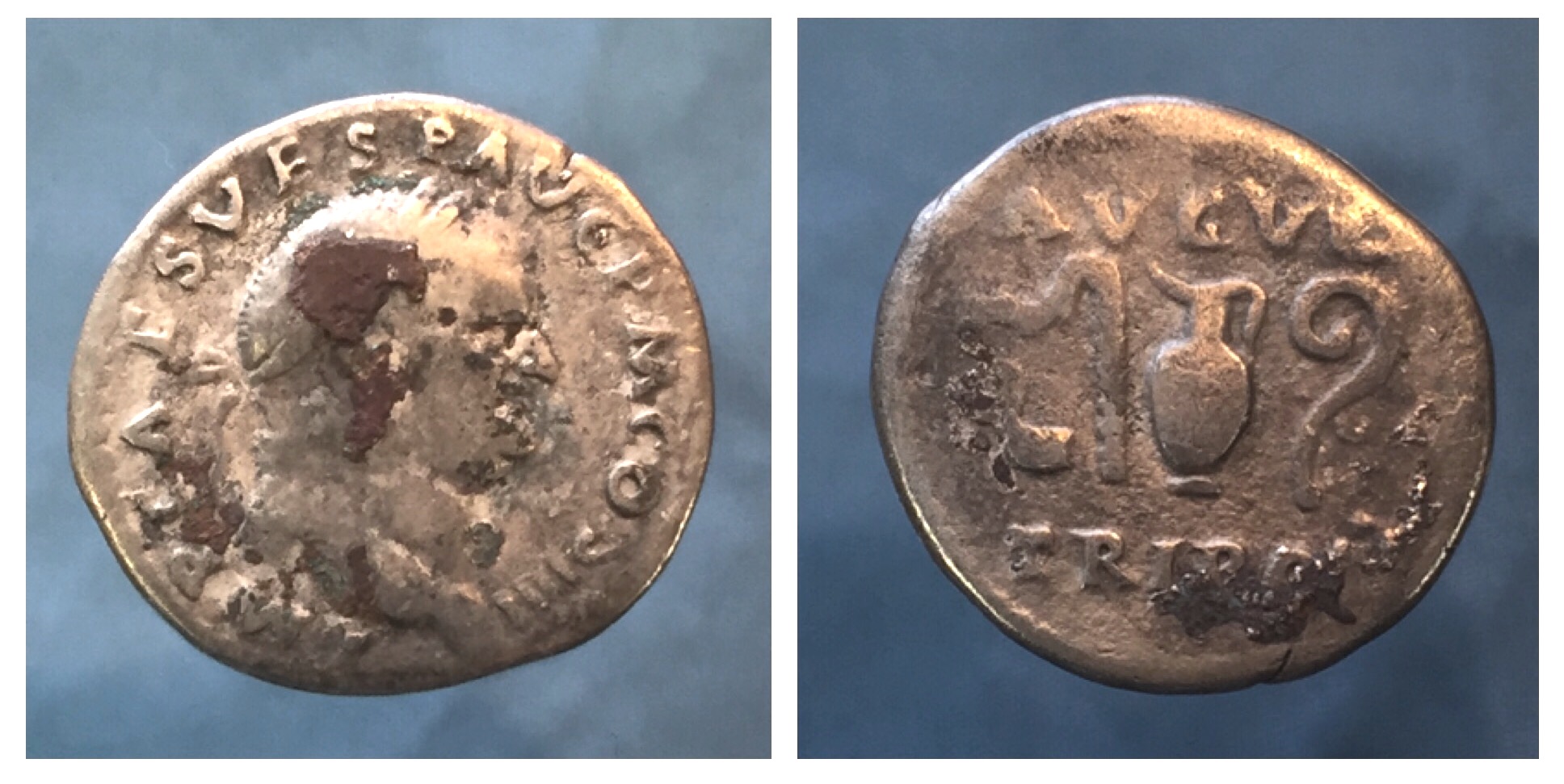Roger Uselton Collection of Ancient and Biblical Coins
Coin Detail
- Uselton Catalog #: 21
- Class: Roman Imperatorial & Imperial
- Ruling Authority: Vespasian (69-79 A.D.)
- Date Struck: 72-73 A.D.
- Type: AR (silver) denarius
- Size: 18.86 mm.
- Weight: 2.96 g.
- Die Axis: 180°
- Obverse: IMP CAES VESP AVG PM COS IIII; laureate bust right.
- Reverse: AVGVR TRI POT; Sacrificial / priestly implements: simpulum, aspergillum, jug and lituus.
- Exergue:
- References: Vespasian Denarius, RIC 356, (RIC [1962] 42), RSC 45, BMC 64; Rome mint.
- Original #: 14
“The augur was an official and priest, whose main role was to interpret the will of the gods by studying the flight of birds: whether they are flying in groups or alone, what noises they make as they fly, direction of flight and what kind of birds they are. This was known as “taking the auspices.” The ceremony and function of the augur was central to any major undertaking in Roman society, public or private, including matters of war, commerce, and religion. The Roman historian Livy stresses the importance of the augurs: ‘Who does not know that this city was founded only after taking the auspices; that everything in war and in peace, at home and abroad, was done only after taking the auspices?’” “The reverse shows the implements of the augurate and pontificate: simpulum (ladle), aspergillum (sprinkler), ewer (jug) and lituus (augural wand)” –Forum Ancient Coins The brown material on the obverse of this coin lies on top of the coin, so this coin is not a fourrée or ancient counterfeit. It is possible that this silver coin “fused” with an adjacent bronze coin in its hoard for centuries, with some bronze remaining on the silver coin.

